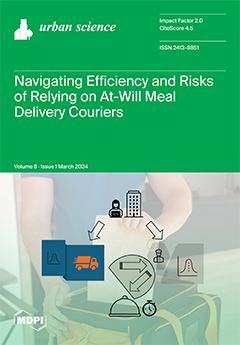Open AccessArticle
Cartographic Resources for Equitable University–Community Interaction in Slum Areas
by
Marbrisa N. R. das Virgens, Patricia L. Brito, Ricardo Lustosa, Julio Pedrassoli, Philipp Ulbrich, João Porto de Albuquerque, Marcos Rodrigo Ferreira, Fernando G. Severo, Alessandra da S. Figueiredo, Marcel Fantin, Hussein Khalil and Federico Costa
Cited by 2 | Viewed by 3867
Abstract
Cartographic resources play a crucial role in facilitating communication across various sectors, including research projects focused on low-income communities. Despite this, some researchers still adhere to colonialist and exploitative approaches. This study aims to promote equitable university–community interaction though cartographic resources, aid academic
[...] Read more.
Cartographic resources play a crucial role in facilitating communication across various sectors, including research projects focused on low-income communities. Despite this, some researchers still adhere to colonialist and exploitative approaches. This study aims to promote equitable university–community interaction though cartographic resources, aid academic and vulnerable community users in choosing a better platform for their work, and provide insights to developers for improving the platforms to better serve the user profiles of community members. To achieve this, we examined the use of cartographic resources in five projects within low-income communities (commonly referred to as favelas or so-called “slums”) in three Brazilian cities, all guided by equitable principles. The study unfolds in four stages: (i) data collection from documents and interviews; (ii) systematization into seven analytical categories—cartographic resources, data, personnel, processes, equipment, general objectives, and specific objectives; (iii) analysis of eight cartographic resources; and (iv) a critical examination of the outcomes. The synthesis of the collected information identified 65 characteristics/demands, with 17 common to all projects, including vector feature creation, thematic map design, printed map usage, and satellite imagery. We also identified 53 geographic information system (GIS) functionalities required for the projects, predominantly related to vector data generation and editing. The outcomes demonstrate the benefits of project methodologies, contributing to a decolonial university–community praxis. Additionally, they underscore the potential of digital cartographic resources, functioning not solely as data collection tools but also as powerful instruments that empower slum residents to advocate for improvements and foster local development.
Full article
►▼
Show Figures





